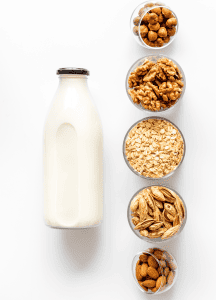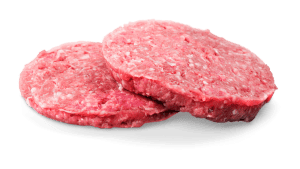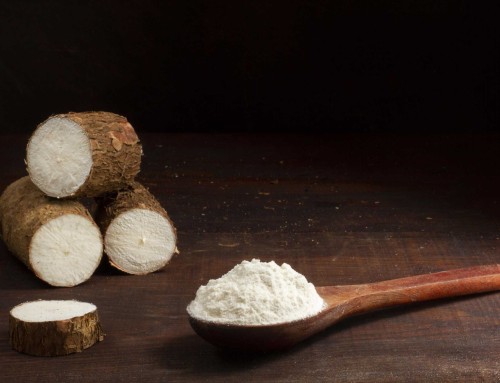Obesity has reached an ‘alarming level’, said experts. According to the National Health and Morbidity Survey, NHMS, the obesity rate in Malaysia has spiked from 14.0% in 2006 to 19.7% in 2019. The cause of this escalation is due to imbalanced diet intake, fast food, sugary treats, and supersized portions. Obesity is serious as it is associated with diabetes, hypertension, and cancer. Therefore, this can be prevented by limiting unhealthy food such as reducing the consumption of sugar, salt, fast food, and consuming high fibre content food.
What is Fibre?
Fibre is a form of carbohydrate which is unable to be digested by the body. Unlike most carbohydrates that can be broken down into sugar molecules, fibre cannot undergo this process and travels through the body undigested hence, helps to keep hunger and blood sugar levels in check by regulating the body’s usage of glucose. They can be divided into: a) soluble fibre and b) insoluble fibre.
Both types of fibres function in various ways and have different effects on regular gastrointestinal activity. Water dissolves soluble fibre, whereas insoluble fibre does not dissolve in water. Soluble dietary fibres bypass the small intestine digestion process and are easily fermented by the large intestinal microorganisms meanwhile, insoluble fibres appear to increase faecal volume.
What is the Importance of Fibre?
- Benefits for gut health – significant moderator of digestion in the small bowel
- Fibre as functional properties in food and beverages product – offer functional properties, alter textural qualities, prevent syneresis, stabilise high-fat foods and act as emulsions
- Fibre has better health claims – USDA 2015 claims diets rich in fibre reduce cardiovascular risk
- Fibre helps to reduce NCDs – minimises the incidence of overweight and obesity, type-2 diabetes, and cancer
- Fibre helps to lower down cholesterol
Application of Fibre in Food Products
1. Bakery Products
- Common issues that occur when producing flour-based products are:
- Dryness, staling of the bakery product and high breakages in cookies

- Dryness, staling of the bakery product and high breakages in cookies
- Our range of JRS fibres can help to solve the issues above. Moreover, it provides with:
- High in fibre
- Low GI
- Good for healthy choice logo implementation
- Clean label (E-number free)
- Suitable for fibre enrichment
- Fat and sugar reduction solution
Types of fibre:

2. Beverages and Nutrition Products
- Common issues that occur in when producing high fibre beverages:
- Difficult to get the amount of high fibre content if using natural products and unable to get the right mouthfeel
- Our range of JRS fibres can help to:

- Get the right amount of fibre in food products
- Improve mouthfeel in high fibre beverages
- Provide for fibre enrichment in nutritional-based product
Types of fibre:

Other Functions of Fibre in Food Applications
1. Meat and Plant-based Meat Products
- Common issues that occur when producing meat-based products

- To achieve the right texture (firmness, good bite) and shape retention
- How Markaids can help?
- Our range of JRS fibres can help to:
- Have a better shape stability
- Improve binding effect
- Produce juicy meat products by improving water holding
- Achieve meat-like texture for plant-based product
- Our range of JRS fibres can help to:
Types of fibre:

Obesity has reached an ‘alarming level’, said experts. According to the National Health and Morbidity Survey, NHMS, the obesity rate in Malaysia has spiked from 14.0% in 2006 to 19.7% in 2019. The cause of this escalation is due to imbalanced diet intake, fast food, sugary treats and supersized portions. Obesity is serious as it is associated with diabetes, hypertension and cancer. Therefore, this can be prevented by limiting unhealthy food such as reducing the consumption of sugar, salt, fast food and consuming high fibre content food.
What is fibre?
Fibre is a form of carbohydrate which is unable to be digested by the body. Unlike most carbohydrates that can be broken down into sugar molecules, fibre cannot undergo this process and travels through the body undigested hence, helps to keep hunger and blood sugar levels in check by regulating the body’s usage of glucose. They can be divided into: a) soluble fibre and b) insoluble fibre.
Both types of fibres function in various ways and have different effects on regular gastrointestinal activity. Water dissolves soluble fibre, whereas insoluble fibre does not dissolve in water. Soluble dietary fibres bypass the small intestine digestion process and are easily fermented by the large intestinal microorganisms meanwhile, insoluble fibres appear to increase faecal volume.
What is the importance of fibre?
- Benefits for gut health – significant moderator of digestion in the small bowel
- Fibre as functional properties in food and beverages product – offer functional properties, alter textural qualities, prevent syneresis, stabilise high-fat foods and act as emulsions
- Fibre has better health claims – USDA 2015 claims diets rich in fibre reduce cardiovascular risk
- Fibre helps to reduce NCDs – minimises the incidence of overweight and obesity, type-2 diabetes, and cancer
- Fibre helps to lower down cholesterol
Application of fibre in food products
1. Bakery products
- Common issues that occur when producing flour-based products are:
- Dryness, staling of the bakery product & high breakages in cookies
- Our range of JRS fibres can help to solve the issues above. Moreover, it provides with:
- High in fibre
- Low GI
- Good for healthy choice logo implementation
- Clean label (E-number free)
- Suitable for fibre enrichment
- Fat & sugar reduction solution
Types of fibre:

2. Beverages and nutrition products
- Common issues that occur in when producing high fibre beverages:
- Difficult to get the amount of high fibre content if using natural products and unable to get the right mouthfeel
- Our range of JRS fibres can help to:
- Get the right amount of fibre in food products
- Improve mouthfeel in high fibre beverages
- And give fibre enrichment on nutritional based product
Types of fibre:

Other function of fibre in food applications
1. Meat & Plant-based meat products
- Common issues that occur when producing meat-based products
- To achieve the right texture (firmness & good bite) and shape retention
- How Markaids can help?
- Our range of JRS fibres can help to:
- Have a better shape stability
- Improve binding effect
- Produce juicy meat products by improving water holding
- Achieve meat-like texture for plant-based product
- Our range of JRS fibres can help to:
Types of fibre:

Book a 30-min call with us
Need assistance to overcome your product challenges? Speak to us and let us help you to make your products healthier and still as tasty.





